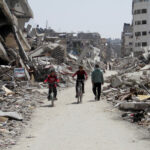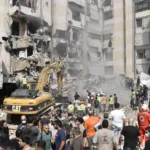The Gaza crisis, with all its violence and deteriorating humanitarian situation, has been going on. With the situation getting worse by the day, among the most asked questions are: How long will this crisis in Gaza last, and is there any workable solution from the international community, especially states of the UN?
Excessively populated and tiny, the enclave of Gaza has been a witness to heavy fighting on all sides for many years. The dispute over land, sovereignty, and security between Israel and Palestine has lain at the very epicenter of this conflict. Heavy fighting between Israeli forces and numerous Palestinian, factions-including the powerful force known as Hamas-has resulted in heavy civilian casualties, destruction of infrastructure, and even severe shortages in vital resources.
The humanitarian situation in Gaza remains critical: blockades, periodic military operations, and ongoing violence make for extreme poverty, inadequate medical care, and even a lack of basic facilities such as clean water and electricity. The international community has repeatedly called for conflict resolution, but progress is slow and sporadic.
The United Nations has been very active regarding the crisis in Gaza through different agencies and resolutions. Humanitarian aid is delivered, peace talks are conducted, and mediation attempts between the parties in conflict are ongoing. However, these interventions are usually constrained by the related complex politics and set positions of the parties concerned.
United Nations states, significant actors within the international theater, have a solid potential bearing on the matter. Some of their interventions include imposing diplomatic pressure, rendering humanitarian assistance, and facilitating peace-building processes. However, the potential of the UN States to do something is shortened by the following: geopolitical interests, alliances that are often in conflict, and the complexity of international diplomacy preclude decisive action.
It illustrates how the UN Security Council has become most relevant, considering it can impose sanctions, send peacekeeping missions, and pass resolutions targeting conflicts. More often, though, such actions need to be correctly received by the body due to vetoes by the permanent members or the absence of consensus among the members.
Thus, adopting a multiple-faceted approach to resolving the crisis in Gaza is essential. This will include identifying the underlying issues that led to the conflict, such as the Israeli-Palestinian conflict, and finding long-term solutions to resolve the dispute. It also encompasses humanitarian assistance that could, in a particular manner, reduce the quality of life of Gaza’s population.
But it is not enough to make symbolic overtures; it has to go further. The UN states should coordinate their interventions through diplomatic engagement, financial support, and pledged commitment to long-term solutions. Besides, the voices of the Gazan civilians, who were directly affected by the crisis, need to be listened to and factored into the formulation of any peace strategy.
Ultimately, the duration of the crisis in Gaza will be determined by one factor: the will of the international community and the capability and intent of the parties to the conflict to sincerely communicate and make concessions. While the UN states can make a pivotally important role in facilitating and supporting efforts toward resolution, lasting peace will follow a careful path of sustained commitment, innovative solution-making, and a focused attempt directed at immediate needs and deep-lying problems.
The Gaza crisis has lasted for several years, with a viable chance of alteration if the member states of the UN and the global society act in unison. Whether they will “save the day” depends on their ability to lead through international diplomacy and successfully promote a strategy that will appeal to the humanitarian aspect and have its eye on the political ball in the region.















